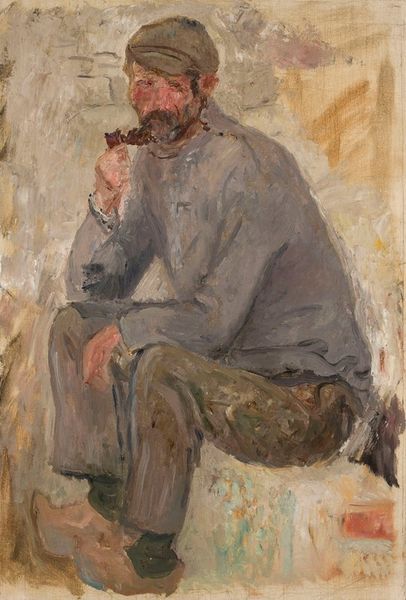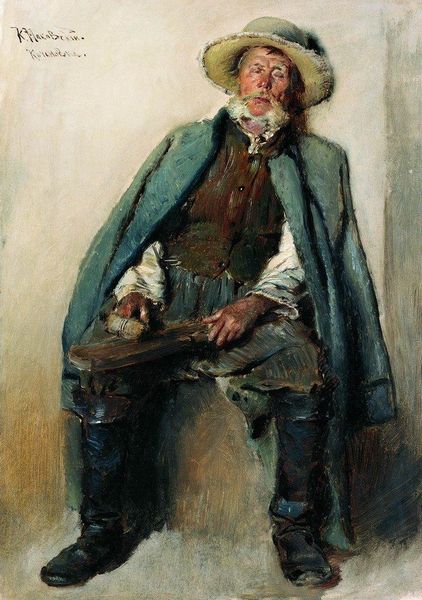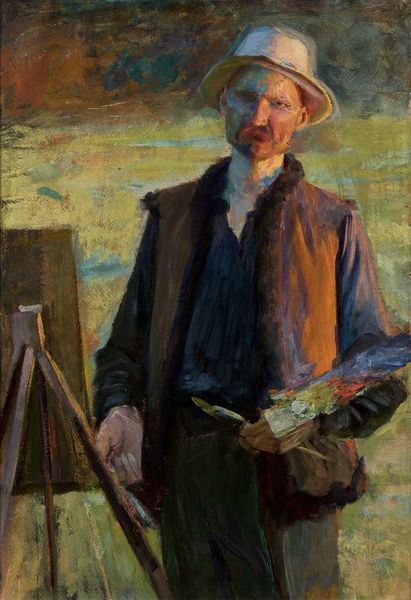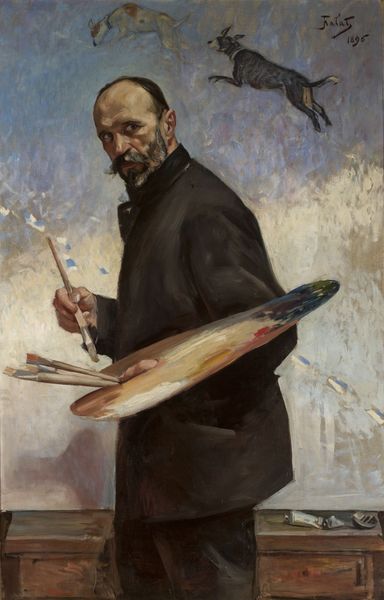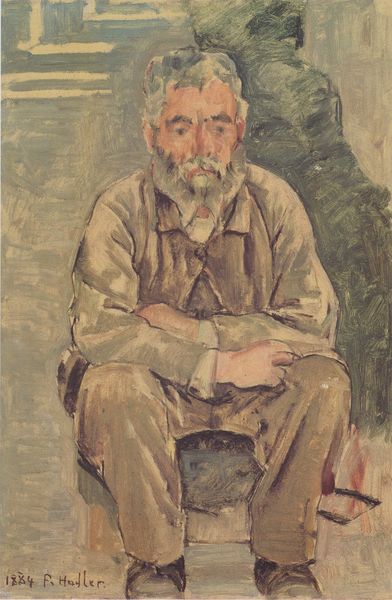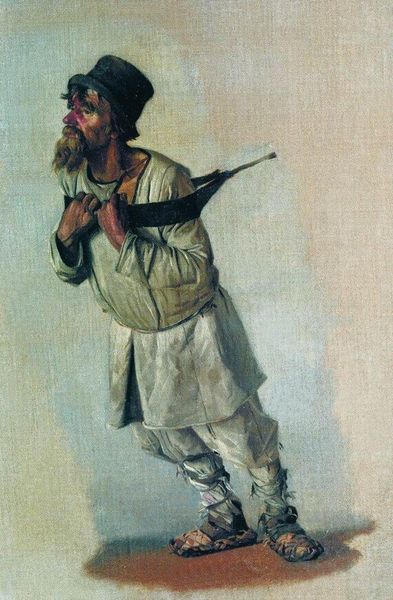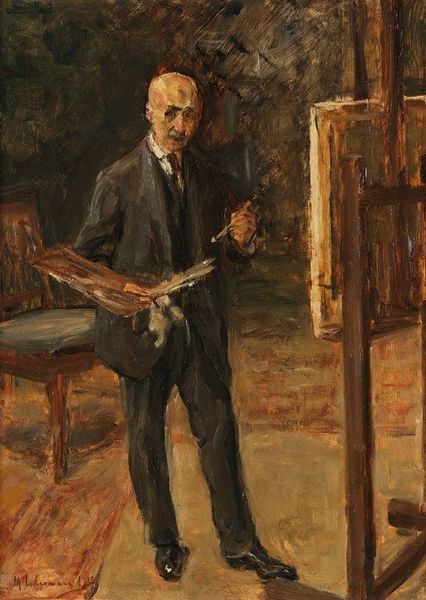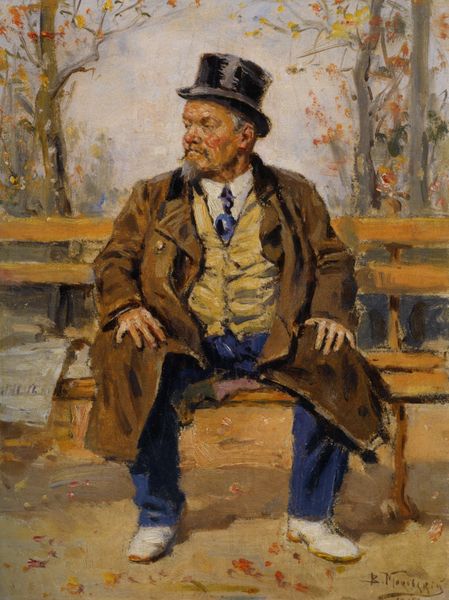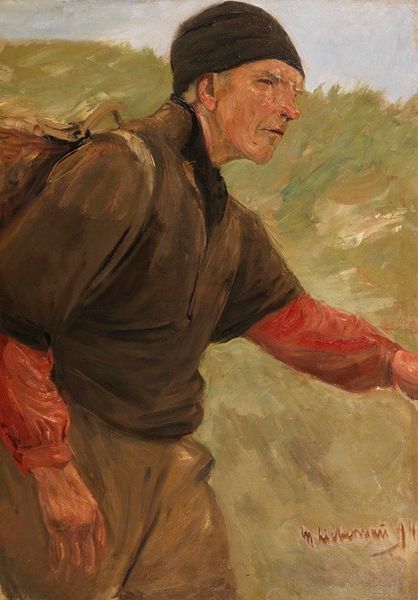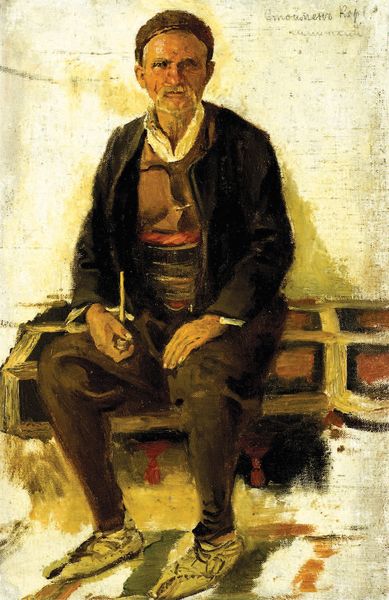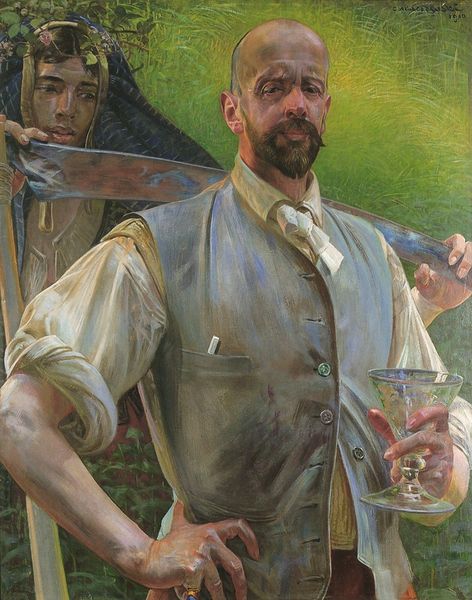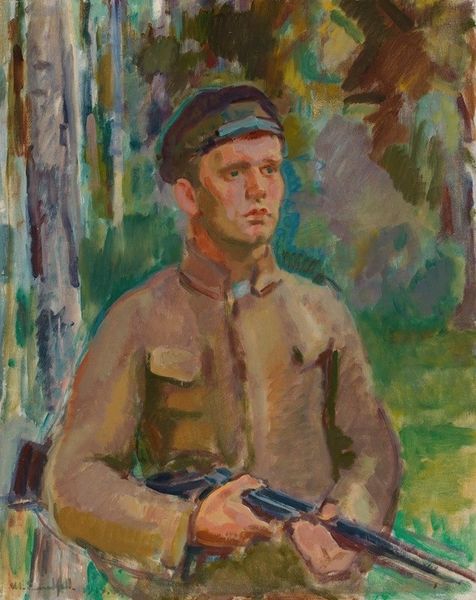
oil-paint, impasto
#
portrait
#
figurative
#
self-portrait
#
oil-paint
#
oil painting
#
impasto
#
symbolism
Copyright: Public Domain: Artvee
Editor: We are looking at "My Models – Triptych", an oil painting by Jacek Malczewski, from 1909. It’s quite a direct image – a self-portrait of the artist. I’m intrigued by how casually he presents himself, almost caught in a moment. What can you tell me about the context of this painting? Curator: Malczewski's self-portraits are rarely straightforward depictions. Think about the historical moment: early 20th century Poland, under partition, grappling with identity. Malczewski, a leading figure in the Symbolist movement, uses his own image as a stage for exploring these national and personal anxieties. Look at his pose; does it strike you as traditionally heroic? Editor: No, not at all. It’s more… vulnerable, maybe? And is that another landscape painted behind him? Curator: Precisely. That adds another layer. Consider how landscape painting had, by that time, been closely tied to ideas of national identity and romanticism. Placing himself within that context—literally within the frame—questions the role of the artist in shaping national consciousness. Editor: So, he's not just painting himself, but painting the role of the artist itself? It’s a performance of self, then, for an audience, a carefully constructed visual argument. Curator: Exactly! It asks the viewer to think critically about the construction of identity and the power dynamics inherent in the act of representation. And if this is a ‘triptych,’ where are the other panels, what narratives are he constructing about the nature of artistry in a subjugated nation? It's fascinating, isn’t it, how a seemingly simple self-portrait can reveal so much about its socio-political milieu. Editor: Definitely! It completely changes how I see the image. Thank you for the deep dive.
Comments
No comments
Be the first to comment and join the conversation on the ultimate creative platform.
